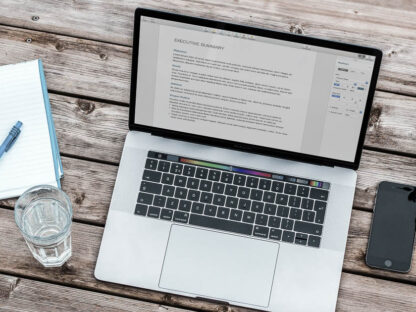Editing Tips
From complete beginners to experienced editors, our blog has something for everyone! Learn about the different types of editing – developmental, comprehensive, line, and copy editing – and read our expert advice on editing all different types of documents (including business, creative, and academic).
-

Substantive vs. Mechanical Editing: What You Need to Know
Substantive vs. Mechanical Editing: What You Need to Know
Published Feb 24, 2020
Last Updated Mar 14, 2025What does editing involve? Well, that all depends on the type of editing and who you ask. But to keep things simple, we’ll focus on two main categories: Substantive Editing (The Big Picture) – Focuses on the document as a whole, not the small details. It may involve making major changes to a text, including […]
-

Copy Editing vs. Proofreading: What You Need to Know
Copy Editing vs. Proofreading: What You Need to Know
Published Feb 06, 2020
Last Updated Mar 25, 2025Copy editing and proofreading are both types of editing that take place toward the end of the writing process to get a text ready for publication. But while these terms are often used interchangeably, they aren’t quite the same thing. To make matters even more confusing, many freelance editors offer a blend of both services. […]
-

What to Do with Tentative Language
Published Jan 13, 2020
Last Updated Nov 18, 2024Tentative language – also known as – is a common feature of many types of writing. But what exactly do we mean by tentative language? And what should you do if you encounter hedging when editing or proofreading a document? In this post, we explain all. What Do We Mean by Hedging? If a document […]
-

Substantive vs. Mechanical Editing: What You Need to Know
Published Feb 24, 2020
Last Updated Mar 14, 2025What does editing involve? Well, that all depends on the type of editing and who you ask. But to keep things simple, we’ll focus on two main categories: Substantive Editing (The Big Picture) – Focuses on the document as a whole, not the small details. It may involve making major changes to a text, including […]
-

Copy Editing vs. Proofreading: What You Need to Know
Published Feb 06, 2020
Last Updated Mar 25, 2025Copy editing and proofreading are both types of editing that take place toward the end of the writing process to get a text ready for publication. But while these terms are often used interchangeably, they aren’t quite the same thing. To make matters even more confusing, many freelance editors offer a blend of both services. […]
-

Should You Edit Citations and References?
Published Jan 27, 2020
Last Updated Jun 02, 2025You need to know your referencing systems if you’re proofreading academic documents. Knowadays covers several major referencing styles to this end, but we’re often asked how far an editor should go with citations. The answer is But that isn’t a very helpful answer, so we’ll look more at how to edit references and citations below. […]
-

What to Do with Tentative Language
What to Do with Tentative Language
Published Jan 13, 2020
Last Updated Nov 18, 2024Tentative language – also known as – is a common feature of many types of writing. But what exactly do we mean by tentative language? And what should you do if you encounter hedging when editing or proofreading a document? In this post, we explain all. What Do We Mean by Hedging? If a document […]
